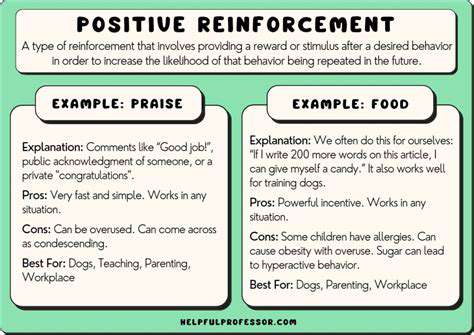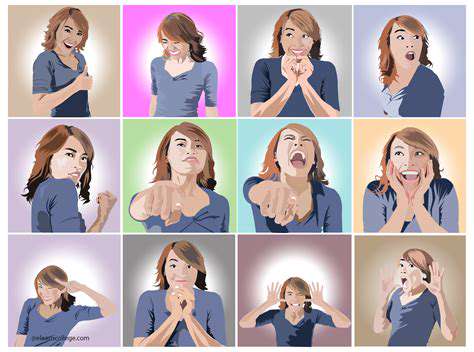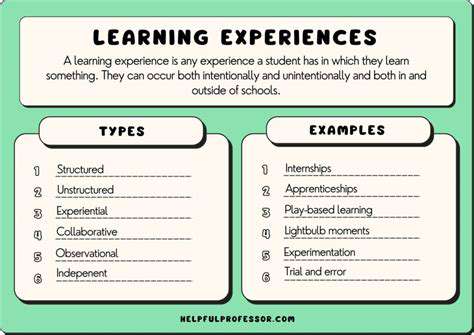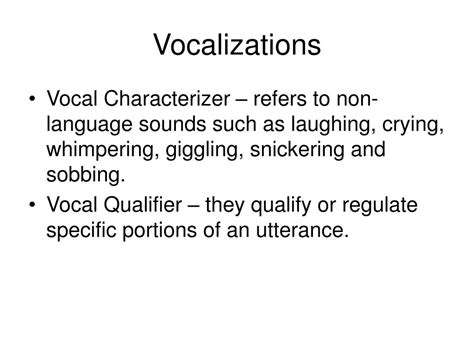We provide practical advice and step-by-step guides on socialization, obedience training, and behavior management. Our goal is to empower you with the knowledge and tools needed for a strong, positive relationship with your puppy.
The Importance of Early Socialization for DogsUnlocking Trust and Connection Early socialization is essential for a dog's development, particularly during the critical socialization window from three to fourteen weeks of age. Puppies exposed to diverse experiences during this time grow into well-adjusted, confident adult dogs, significantly reducing the likelihood of behavioral issues such as anxiety, fear, and aggression. Mastering the Art of SocializationEngaging your new puppy in socialization involves introducing them to various people, environments, sounds, and experiences. Enroll them in supervised puppy classes, take them on trips to different places, and expose them to various sounds like traffic or household appliances. Gradual exposure helps desensitize them, making it less likely for them to react fearfully in adulthood. Lasting Behavioral BenefitsWell-socialized dogs are adaptable, typically displaying lower anxiety levels and better social skills. This adaptability allows for enjoyable outings, whether to parks or on family travels. By fostering positive interactions and compliance through training, owners can witness improved behavior patterns in their pet's adult life. Owner's Role in SocializationAs active participants, dog owners play a vital role in their puppy’s socialization. Balancing structured activities with casual exposure to daily life helps reinforce good behavior. Being a calm and confident presence encourages puppies to mirror that behavior, further helping to reduce anxiety in new situations. Myths DebunkedMany misconceptions surround dog socialization which can hinder a puppy’s learning process. It’s never too late to socialize an adult dog; while it may require more patience, adult dogs can still adapt. Moreover, not every interaction is beneficial—structured, positive experiences are crucial to avoiding reinforcement of undesirable behaviors. Building a Healthier Human-Canine RelationshipThe bond between dogs and their owners thrives on trust and effective communication. Socialized dogs demonstrate clearer signals regarding their needs, which prevents misunderstandings and helps solidify the owner-pet relationship. Furthermore, better social experiences often equate to fewer behavioral issues and a lower incidence of stress-related problems. Engaging in Community and Social OpportunitiesOpportunities for socialization extend to group training classes, local parks, and community events. These activities not only enhance your puppy's social experience but also allow owners to connect with each other, establishing support networks that can enhance overall dog welfare. Your Commitment to Lifelong SocializationRecognizing that socialization is a lifelong endeavor ensures your dog remains well-adjusted. Regular interactions through playdates, community events, or local dog owner groups enable dogs to thrive behaviorally and socially, ultimately leading to a more fulfilling companionship.Investing time in socializing your dog transforms not only their behavior but significantly enriches the owner's experience, contributing to healthier, happier lives for both dog and human. Embrace early socialization and create a nurturing, well-behaved pet!
Mar 29, 2025
Key Stages, Training Techniques, and ChallengesRecognizing the various developmental stages of puppies is essential for fostering their growth, behavior, and training success. From the initial neonatal stage to adolescent challenges, each phase presents unique opportunities for owners to instill positive behaviors and resilience in their pets. Early Developmental StagesDuring the neonatal period (up to two weeks), puppies rely heavily on proper nutrition and warmth. This stage sets the groundwork for future interactions and behaviors. Following this, the transitional stage (up to four weeks) marks the beginning of sensory development as puppies start to open their eyes and ears, paving the way for socialization. Importance of SocializationThe socialization period (three to twelve weeks) is vital for developing a well-adjusted dog. This timeframe encourages exposure to diverse environments, people, and experiences, reducing the likelihood of anxiety and aggression later in life. Engaging with other dogs and practicing positive interactions will ensure adaptability and resilience as they grow. Training through AdolescencePuppies enter the adolescent phase between six to eighteen months, where they may test boundaries. This changing behavior necessitates more structured training methods along with continued reinforcement of earlier lessons. Activities like agility training or obedience classes can strengthen the bond between owner and pet while promoting positive behavior. Monitoring Maturity and Behavioral ChangesBy the age of eighteen months, dogs typically reach maturity, and owners should be vigilant in recognizing behavioral changes. Observations during this period can help adjust training approaches, ensuring continued improvement and stability of behavior. This stage is also a prime opportunity to implement socialization strategies that may mitigate lingering fears or aggressive tendencies. Common Challenges in Puppy TrainingAs puppies grow, they may face various behavioral issues like jumping or excessive barking. Identifying triggers and implementing positive reinforcement techniques can redirect these behaviors effectively. Short, frequent training sessions coupled with consistency foster a more productive learning environment. Tailoring Your Training ApproachEach puppy is unique; therefore, training methods should be adapted to accommodate individual personalities and learning styles. Flexibility in your approach ensures long-term success and engagement. Recognizing your puppy’s temperament and tailoring techniques – whether through play or structured lessons – is critical. The Role of Socialization and ConsistencyEngaging in socialization opportunities such as puppy classes can significantly aid in developing social skills and coping mechanisms. Staying consistent with commands and rewards throughout the training process enhances understanding and prevents confusion. Seeking Professional HelpIf challenges arise or training becomes overwhelming, consulting a professional dog trainer can be beneficial. These experts can provide personalized guidance and strategies to address specific behavioral issues effectively. ConclusionCustomized training is paramount in nurturing well-behaved, adaptable dogs. By understanding developmental stages, employing consistent techniques, and incorporating play, owners can set their puppies on the path to becoming well-adjusted adult dogs. Adopt a proactive, flexible approach to training, and remember that the bond between you and your puppy will flourish with patience, understanding, and love.
Mar 29, 2025
A Comprehensive GuideBringing a new puppy into your home is an exciting adventure, but it requires careful planning and consideration to ensure a successful integration into your family. This guide will help you prepare a safe environment, facilitate smooth introductions with existing pets, and promote a harmonious household. Step 1: Preparing a Safe Space Assess Your Home EnvironmentBefore your puppy arrives, inspect your home for potential hazards. Remove any toxic plants, secure electrical cords, and eliminate small items that could be swallowed. A safe environment reduces risks and gives your puppy room to explore without danger. Create a Designated Puppy ZoneDesignate an area for your puppy that includes a bed, toys, and chew items. Using playpens or gates can help restrict access to certain areas, making it easier for your puppy to adapt and feel secure. Maintain CleanlinessKeep your puppy’s area disinfected and ensure their toys are washed regularly. This not only prevents disease but also promotes their health as they adjust to their new surroundings. Introduce Comfortable FurnishingsSelect soft bedding and durable toys tailored to your puppy’s needs. Arranging the space to minimize stress will help your puppy feel secure, especially during the initial transition. Utilize Safety ProductsIncorporate non-slip mats and baby gates in play areas. Consider using pet cameras for peace of mind, allowing you to monitor your puppy's interactions when you're not around. Step 2: Gradual Introductions and Scent Familiarization Understanding the Role of ScentDogs rely heavily on their sense of smell. To ease your puppy into a home with existing pets, introduce them to your other pets' scents through blankets and toys. This step fosters familiarity and comfort. Step-by-Step TechniquesStart by allowing your new puppy to sniff items belonging to existing pets. Gradual exposure helps them become accustomed to one another's scents before direct interaction. Monitoring InteractionsAfter scent introductions, oversee playdates closely to assess how pets interact. Adjust based on their comfort levels and provide positive reinforcement for calm behavior. Step 3: Controlled Meetings Preparation and Gradual IntroductionsChoose neutral spaces for initial meetings to prevent territorial disputes. Observe pets’ behaviors closely, and introduce them to each other slowly—starting with scent before meeting face-to-face. Understanding Body LanguageInterpreting body language is crucial. Look for signs of comfort or stress in both your puppy and other pets. Reward calm interactions with treats to build positive associations. Step 4: Setting Boundaries and RulesEstablish clear guidelines for pet interactions, defining safe spaces for each animal. This helps prevent stress and potential conflicts as they learn to coexist. Step 5: Patience and Positive ReinforcementSuccess in integrating your puppy with other pets requires patience. Use positive reinforcement to encourage desired behaviors and remain flexible with your expectations. Cultivating HarmonyBy consistently monitoring interactions and providing space as needed, you'll create a stable environment for both old and new pets. Regular check-ins with your veterinarian can also help maintain a peaceful household.---By following these steps, you’ll equip yourself for a successful puppy introduction process, leading to a harmonious and happy household with your furry friends. For further insights, join our newsletter for tips and resources tailored to pet owners.
Mar 29, 2025
Safety and FunSupervised playtime is key to helping puppies learn appropriate behaviors with teenagers. By choosing suitable games and activities, you can encourage interactive fun while keeping safety in focus. Observing canine body language during these moments helps to ensure positive experiences. ConclusionFostering a harmonious bond between a puppy and teenagers involves patience, education, and active engagement. By creating safe spaces and promoting understanding, you can cultivate a nurturing environment that enhances the lives of both teenagers and their new furry friends. For more valuable tips and insights on effective puppy socialization and care, stay tuned to our ongoing blog updates.
Mar 29, 2025
Building a Well-Adjusted CompanionSocialization is vital for puppies, shaping their behavior and temperament for adult life. Early exposure to various environments, experiences, and interactions is crucial, particularly between 3 to 14 weeks of age, a period when puppies are most receptive. This guide explores the importance of socialization, effective techniques, and structured playdates to ensure your puppy grows into a confident, well-adjusted dog. Why Early Socialization MattersEarly socialization prepares your puppy to handle diverse situations as they mature. Puppies that engage positively with different people, sights, and sounds are less likely to develop anxiety or aggression. Studies, including those by the American Kennel Club, indicate that a well-socialized dog will often exhibit better behavior patterns and a calmer demeanor as adults. Effective Socialization Techniques1. Enroll in Puppy Classes: Supervised classes allow for controlled interactions with other dogs, crucial for learning social cues.2. Explore Diverse Environments: Regular visits to parks, pet stores, and busy areas introduce your puppy to different stimuli, helping them adapt to various situations.3. Positive Reinforcement: Reward calm behavior during unfamiliar experiences with treats or praise to strengthen the bond and encourage confidence. Structured Playdates: Building Social SkillsOrganize supervised playdates to help your puppy develop vital social skills. Key considerations include:- Matching Temperament and Size: Introducing puppies with compatible energy levels reduces the risks of overwhelming experiences or aggression.- Creating a Safe Environment: Choose familiar locations with plenty of space to allow for safe exploration.- Engaging Activities: Incorporate games like fetch or agility exercises to promote teamwork and positive interactions. Real-World Experiences: Field Trips and OutingsExpose your puppy to new environments such as cafes or farmers' markets. This exposure cultivates adaptability and resilience. Always monitor their comfort levels and reinforce basic obedience commands during these outings to reinforce training and build trust. Enrichment Activities: Engaging the MindMental stimulation is as essential as physical exercise for your puppy's well-being. Activities like puzzle toys, scent games, and agility training enhance cognitive skills and behavior. Engage your puppy in everyday family activities to foster bonding and improve their social skills. Introducing New Experiences at HomeCreate a safe space at home for your puppy to explore new experiences. Gradually introduce different surfaces, sounds, and textures to broaden their comfort zone. Structured training sessions during playtime integrate learning with fun, reinforcing essential commands. Monitoring Behavior and Establishing Positive ReinforcementBe observant of your puppy’s body language to gauge their comfort levels in social situations. Positive reinforcement is key; rewarding good behavior encourages natural sociability. Over time, your puppy will learn that social interactions are enjoyable, leading to a well-adjusted adult dog. ConclusionRegular socialization is critical for a puppy's development, fostering essential skills for navigating the world confidently. Commit to structured activities and diverse experiences, and you'll raise a happy, well-rounded companion for years to come.
Mar 29, 2025
A Comprehensive GuideUnderstanding your puppy's emotional state is vital for their well-being and social development. This guide outlines the signs of happiness and comfort in puppies, from body posture to vocalizations, helping you create a supportive environment for your furry friend. Signs of Happiness: Body Language Matters Body PostureA relaxed puppy exhibits a loose, non-threatening posture, characterized by a slight lowering of the body, a soft wagging tail, and ears in a neutral position. These signals indicate a sense of safety and openness to positive interactions. Conversely, a tense posture with a stiff tail and raised hackles suggests anxiety or discomfort. By observing your puppy in various settings, you can help foster a supportive atmosphere during social outings. Tail Wagging and Facial ExpressionsTail wagging is often a joyful display, but understanding its nuances is essential. A rightward wag typically signifies happiness, while a leftward wag may indicate distress. Complementing these signals, a relaxed facial expression—wide eyes and a slightly open mouth—indicates comfort, whereas squinting eyes often imply anxiety. Recognizing these signs can greatly enhance your support during social interactions. Recognizing Signs of Stress and Fear Physical IndicatorsPuppies display stress through various behaviors, such as crouching low or adopting stiff postures. A tucked tail is another strong signal of fear. Being aware of these physical cues is crucial for a positive socialization experience for your pup. Vocalizations as CommunicationYour puppy’s barks, whines, and growls convey their emotional states. For example, high-pitched barks may indicate excitement, while low growls can signal fear or discomfort. Paying close attention to the context of these vocalizations can improve your ability to read your puppy’s emotions accurately. Eye Contact and Behavioral ChangesUnderstanding eye behavior can help interpret comfort levels in social situations. Direct eye contact may signify a challenge, while avoiding eye contact indicates submission or fear. Also, behavioral changes in new environments should be addressed through gradual exposure and positive reinforcement. The Importance of Play and Aggression Management Encouraging PlayfulnessPlay is crucial for puppies' socialization and emotional development. Signs such as relaxed posture and play bows show a willingness to engage. Recognizing these behaviors fosters confidence and promotes positive social skills. Identifying Aggressive PosturingBeing able to recognize aggressive behaviors, like stiff tails or intense growling, is essential for preventing conflicts. Misinterpreting these signals can lead to dangerous situations. Understanding that fear may underpin aggressive actions allows for more effective training and intervention strategies. Communicating Through VocalizationsDogs use vocalizations to express various emotions. High-pitched barks often signal excitement, while growls may indicate discomfort. Context matters substantially when interpreting these sounds, enhancing communication between you and your puppy. Building Confidence Through Positive ReinforcementUtilizing positive reinforcement—a method that rewards desired behaviors—can significantly strengthen the bond between you and your puppy. Consistency is vital, along with observing your puppy’s body language to understand the best times to train. Gradual exposure to new stimuli, coupled with positive experiences, builds your puppy’s confidence. ConclusionRecognizing signs of happiness and comfort in your puppy, while understanding the signals of stress or fear, is vital for fostering a nurturing environment. Through attentive observation and positive reinforcement methods, you’ll enhance your puppy’s social skills and overall well-being.
Mar 29, 2025
Hot Recommendations
-
*The Impact of Early Socialization on a Dog's Interaction with Other Animals
-
*Car Travel and Puppy Socialization: Making the Journey a Positive Experience
-
*The Importance of Early Environmental Exposure for Puppy Development
-
*Taking Your Puppy to the Vet: Positive Socialization Strategies
-
*Making Training a Positive Experience for Your Puppy
-
*Public Transportation and Puppy Socialization: A Step by Step Guide
-
*Safe Socialization: Allowing Others to Pet Your Puppy
-
*Helping a Puppy Who Struggles with "Stay"
-
*Positive Puppy Interactions: Making Meetings with New Friends Fun
-
*No Treats Needed? Training Basic Commands with Verbal Praise





